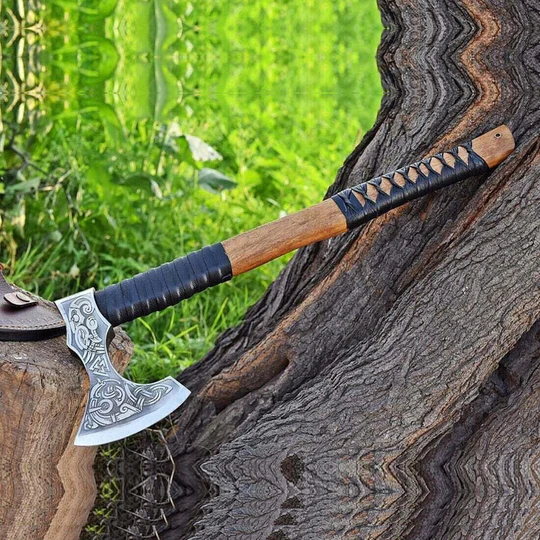
Exploring the World of Real Battle Axes
Introduction
Battle axes hold a prominent place in history as formidable weapons wielded by warriors across cultures and eras. These real battle axes were not only tools of war but also symbols of strength, power, and prestige. In this article, we'll delve into the fascinating world of real battle axes, exploring theirdesighistosignificance, and enduring legacy.
1 Origins and Evolution
The use of battle axes dates back thousands of years to ancient civilizations such as the Egyptians, Greeks, Romans, and Vikings Initially crafted from stonobronze, early battle axes evolved over time with the advent of iron and steel, becoming more lethal and effective in combat Different cultures developed unique styles and designs of battle axes suited to their warfare tactics, from the double-bladed axes of the Vikings to the single-bladed axes of medieval knights.2 Design and Construction
Real battle axes were crafted with meticulous attention to detail, combining functionality with artistic expression The head of a battle axe typically featured a sharp blade on one side for cutting and a spike or hammer on the opposite side for piercing armor or delivering blunt force trauma Handles varied in length and material, with some axes designed for one-handed use in close combat andothers requiring two hands for greater leverage and power Decorative elements such as engraved patterns, inlaid metals, and sculpted motifs often adorned the axe head and handle, reflecting the craftsmanship and status of the wielder.
3. Combat Utility:
- Battle axes were versatile weapons capable of inflicting devastating injuries on opponents in close-quarters combat.
- The weighted head of the axe delivered powerful strikes capable of cleaving through armor, helmets, and shields with ease.
- Some battle axes featured a hooked or bearded blade, allowing warriors to pull opponents off horseback or disarm adversaries in combat.
- In addition to their offensive capabilities, battle axes could also be used defensively for blocking and parrying enemy attacks.






